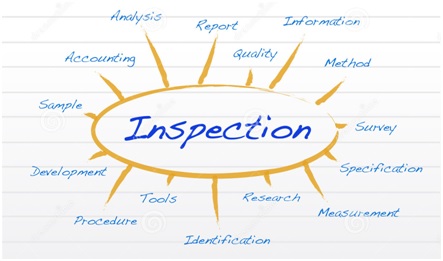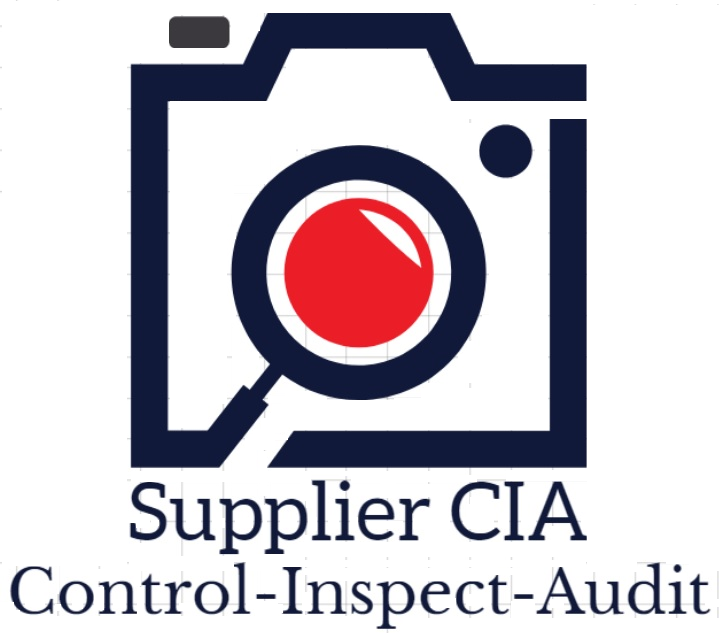An inspection is an activity such as measuring, examining, testing or gauging one or more characteristics of a product and comparing the results with specified requirements in order to establish whether conformity is achieved for each characteristic. (This definition comes from the ISO 2859 standard, which is derived from MIL-STD 105 E.)
Generally, quality inspectors do this by following a pre-established Check List based on certain product specifications. In fact, any type of product can be inspected, starting with just the components used for the product to semi-finished ones and (most often) the finished product itself.
Inspected products can be the components used for production, semi-finished goods, or (most often) finished goods before shipment to a customer.
In Quality Inspection inspectors should inspect the items with the following categories:
A. Quantity (Production Status of finished, packaged and unpackaged items)
B. Workmanship (Defects if available)
C. On-Site Tests (Product Function and Barcode Scan Tests)
D. Materials & Components (Dimensions, weight, color, general appearance)
E. Packing and Packaging (Dimensions of export cartons, product box)
F. Marking & Labeling
G. Photos and videos and Client Special Requirements
Part of the job is to pick samples and think;
“Would a consumer/user accept this?” if it is sold to users,
“Would this create issues down the road?” if the part is to be further processed or assembled. However, there needs to be a checklist too.
After all, the products were made based on agreed-on specifications? Does production conform to these specs? The typical approach is to use these specs as a checklist, to guide the control process.
Sample checklist for a wristwatch;
| Check Point | Description |
| Watch Case | Check for scratches, bad polishing, other cosmetic defects |
| Watch Strap | Check for scratches, bad prints, other cosmetic defects |
| Gift Box | Check for scratches, bad prints, other cosmetic defects |
| Watch Face | The clock shall be shiny, not matt |
| Logo | Cross-check clients artwork to ensure logo is an exact match |
| Net Weight | Take weight, report actual findings and compare to client specification. Values in grams |
| Watch Dimentions | Take dimensions to report actual findings and compare to client specification. Values in mm. |
| Giftbox Dimentions | Take dimensions to report actual findings and compare to client specification. Values in mm. |
| Smell Check | No strong or irritate smell is allowed on the product. |
| Movement | Check movement model against client specs. Eg. Seiko AL35 |
| Drop Test | Drop height should be 1m on flat and hard surface with batteries inside. 6 Flat drop ( bottom, top, right, left, front, back) on each sample. The product should work normally 1 hr after test. |
| Movement Test | Remove the plastic movement blocker to test the movement for 3 hours. |
| Component Check | Open the watch case to check the movement and battery. |
| Glass Hardness | Check the glass hardness with the specific hardness testing tool. |
| Scrach surface of Strap | Scratch the surface of the print to see the if colors come off |
| Assemble Fitness Check | It is important that the strap is securely fitted and correctly assembled. |
| Basic Funtion | Check the basic function of the product. It should work as claimed. |
| Full Function | Check the full functions as claimed in the user manual. |
| Fatigue Test | Press, push, use adjustable parts 50 times. The product should be as remain the same as new. |
| Color Fastness | Rub 30 cycles with dry cotton cloth and 10 cycles with wet cotton cloth. |
| Adhesive test | Use 3M tape for testing coating, electroplate and markings (logos, labels, barcodes…) |
| Fitting Test | Wear the product, it should fit well and no obvious problem. |
| Strap Strenght | Pull the strap with normal strenght of around 3lb, belt should remain firmly. |
| Water Pressure | Use water pressure machine to check model A: Gold (should strain 3 ATM) – (Depends on specs. and design) |
| Time accuracy | Check for the time accuracy for 1 day, record actual finding. |
| Shaking test | Shake the product 3 minutes, product should remain same after the test. |
| Watch hand alignment | Check watch if hand align |
| Internal workmanship | Open the unit, check the internal workmanship: such as right polarity connections, no exposed connector, good connections, cables are well fixed etc. |


